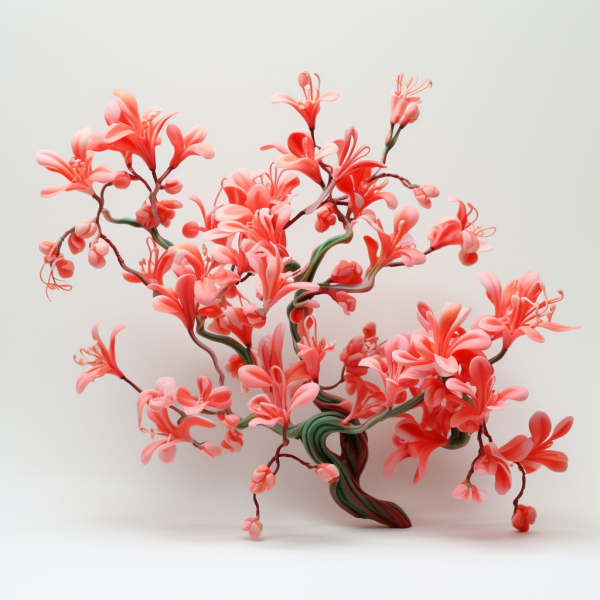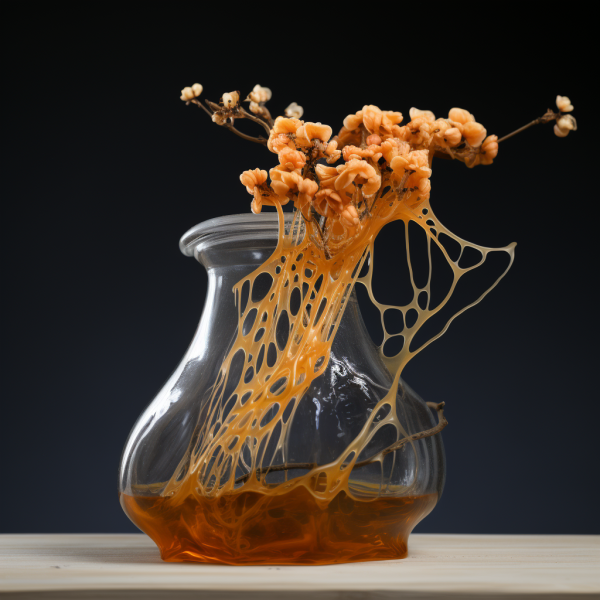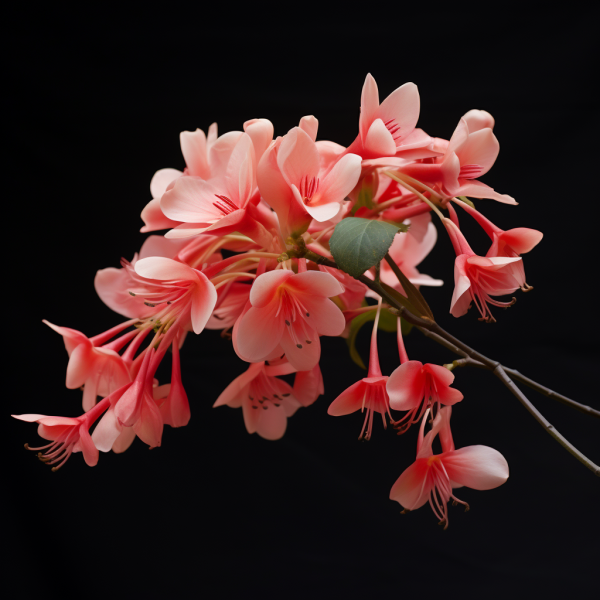
Introduction
Coral honeysuckle, scientifically known as Lonicera sempervirens, stands out as a captivating vine, adding both aesthetic and ecological value wherever it grows. Unlike many of its counterparts in the flower kingdom, this unique species doesn’t rely on a tantalizing aroma to draw attention. Instead, it impresses with its radiant display of blooms, effortlessly weaving their magic across trellises and fences.
Origin and Appearance
Native to the United States, the Coral honeysuckle boasts trumpet-shaped flowers, painting gardens with a brilliant yellowish-red hue. While most plants bank on their floral display alone, the Coral honeysuckle complements its blooms with waxy, textured leaves and stems, giving it a distinct appearance.
A Natural Decorator
Homeowners and garden enthusiasts often choose the Coral honeysuckle to breathe life into their outdoor spaces. Its sprawling nature makes it an ideal candidate to serve as a natural cover for various garden structures. Imagine a sunny day, where a trellis draped with the vibrant blossoms of Coral honeysuckle forms the perfect backdrop for a garden soiree or a quiet reading nook.
Upcoming Insights
As we delve deeper into the world of Coral honeysuckle, we’ll explore its rich history, debunk myths regarding its invasiveness, and share valuable tips on its planting and care. Whether you’re a seasoned gardener or a budding enthusiast, this guide promises insights to enhance your gardening journey.
As we delve deeper into the world of Coral honeysuckle, we’ll explore its rich history, debunk myths regarding its invasiveness, and share valuable tips on its planting and care. Whether you’re a seasoned gardener or a budding enthusiast, this guide promises insights to enhance your gardening journey.
Knowing Coral Honeysuckle

The natural world is vast and filled with wonders, and among these, the Coral honeysuckle stands as a testament to nature’s beauty and versatility. Understanding this plant goes beyond its aesthetic appeal, taking us into the heart of its history, uses, and benefits.
Historical Roots and Native Origins
Predominantly found in the Eastern United States, the Coral honeysuckle has been an integral part of the region’s flora for centuries. Its trumpet-like flowers, painted in mesmerizing shades of yellowish-red, have caught the eye of many a traveler and native alike. But beyond its beauty lies strength; the waxy leaves and stems of this plant, complete with coiled tendrils, enable it to grow impressively up to 20 feet.
Significance in Native American Culture
The Coral honeysuckle is not just revered for its beauty. For Native Americans, this plant holds cultural and medicinal importance. Traditionally, the leaves of this plant were soaked in warm water to make tea or were smoked. Such preparations were believed to possess therapeutic properties, potentially alleviating ailments like asthma, sore throats, and coughs. While modern science has yet to fully confirm these claims, the deep-rooted belief underscores the plant’s importance in indigenous cultures.
Growth and Habitability Across the US
Adaptable and resilient, the Coral honeysuckle thrives in a wide range of conditions, spanning USDA hardiness zones 4 to 11. This broad adaptability means that whether you’re in a cooler northern state or a warmer southern one, this vine can be a part of your garden landscape. Moreover, its ability to attract butterflies and hummingbirds can turn your garden into a mini-ecosystem, promoting biodiversity and bringing the space alive with fluttering wings and the soft hum of birds.
Enhancing Outdoor Spaces
If you’re considering adding a touch of nature to your home’s exterior, the Coral honeysuckle is a promising candidate. It can elegantly drape over fences or climb up trellises, adding depth, color, and charm to your outdoor setting. And while it enhances the beauty of your space, it also invites various pollinators, ensuring your garden remains vibrant and dynamic.
Is Coral Honeysuckle Invasive?
When it comes to introducing new plants to gardens or landscapes, one pressing concern for many horticulturists and garden enthusiasts is invasiveness. The term ‘invasive’ in botany refers to plants that spread aggressively, often choking local flora and disrupting ecosystems. And while the honeysuckle family has been branded with this reputation, it’s essential to discern fact from fiction.
The Reputation of the Honeysuckle Family
Honeysuckles, in general, have garnered a reputation for their invasive tendencies. This is particularly true for certain species like the Japanese honeysuckle. It’s an aggressive grower, known to dominate a variety of habitats, from forest floors to wetlands. With its capacity to coil around young saplings, the Japanese honeysuckle can shade and eventually choke adjacent flora, leading to unbalanced ecosystems.
The Truth About Coral Honeysuckle
However, it’s crucial to distinguish between species. The Coral honeysuckle, despite being part of the same family, doesn’t share the aggressive traits of its infamous cousin. Instead, it coexists harmoniously with surrounding plants, making it a safe and beautiful addition to gardens across North America.
Making Informed Choices
If you reside in America, especially regions prone to invasive plant issues, it’s wise to be cautious about the plant varieties you introduce to your garden. While the Japanese honeysuckle might offer quick coverage and growth, the long-term ecological implications can be detrimental. As a responsible gardener, choosing the Coral honeysuckle offers both beauty and peace of mind, knowing you’re not inadvertently harming your local ecosystem.
Interested in what else you can grow? Check out our other guides!

How to Grow Coral Honeysuckle
A Gardener’s Guide: Growing Coral Honeysuckle with Ease
Embracing the natural beauty of Coral honeysuckle in your garden is not just about its visual appeal; it’s also about understanding its growth requirements. Luckily, Coral honeysuckle is a forgiving plant, making it an excellent choice for both seasoned gardeners and beginners.
Selecting the Perfect Spot
The key to a flourishing Coral honeysuckle is ensuring it receives ample sunlight. While it can adapt to various light conditions, it truly thrives when bathed in full sun or at least partial sunlight. This sunlight exposure ensures the plant produces its signature oval-shaped, red flowers in abundance.
Soil Preferences and Planting Time
Though Coral honeysuckle is versatile in its soil requirements, it prefers a well-draining mix. Consider using acidic potting soil or amending your garden soil to ensure optimal growth. As for the best planting time, aim for spring or fall. These transitional seasons offer the moderate temperatures that Coral honeysuckle seedlings need to establish themselves.
A Note on Toxicity
While the Coral honeysuckle is a marvel in gardens, it’s essential to be aware of its toxicity, especially if you have pets. Its beauty can be enticing, but ingestion can be harmful. Ensure you choose a planting location that keeps curious pets at bay.
Starting from Seeds
If you’re looking to grow Coral honeysuckle from seeds, a bit of patience and preparation is required. Begin by storing the seeds in a refrigerator for about three months, a process known as cold stratification. This process mimics natural winter conditions and ensures better germination rates. Once stratified, sow the seeds in moist, well-draining soil. To maintain humidity, cover the seeds with a plastic bag or tray, removing it once you notice seedlings emerging.
Nurturing Nature: Comprehensive Care for Coral Honeysuckle
Caring for Coral honeysuckle is more about understanding its natural habitat and replicating those conditions than a strict regiment of complicated tasks. This plant, with its adaptability and resilience, requires basic attention to truly shine in your garden.
Ensuring Optimal Sun Exposure – Radiation
Sunlight is pivotal for the Coral honeysuckle. It thrives best when exposed to full sun, as this ensures prolific blooming. However, it’s not a strict sun worshiper; the plant can manage in partially shaded areas too. But remember, the more sun it gets, the more abundant the blooms.
Understanding Soil Needs
Versatility is the name of the game with Coral honeysuckle. It can prosper in various soil types but shows a preference for well-draining, rich soil. To boost its growth, consider amending your soil with compost, providing it with the nutrients it craves. And while it’s not very picky, it does have a slight preference for slightly acidic soil conditions over neutral ones.
Watering Wisdom
Water is the elixir of life for all plants, and the Coral honeysuckle is no exception. While mature plants are relatively drought-resistant, younger plants need consistent watering to establish their root systems. If you’re in an area with regular rainfall, nature might take care of the watering for you. However, during drier periods, ensure the soil remains consistently moist but not waterlogged.
Temperature and Humidity Tolerance
Coral honeysuckle showcases impressive hardiness. From withstanding chilly frosts to enduring heatwaves, it’s a true garden champion. Ideal for USDA hardiness zones 4 to 11, this plant is versatile in its climate requirements. However, be mindful of humidity levels. Excessive humidity can encourage the growth of powdery mildew, a common plant ailment. Ensure good air circulation around your Coral honeysuckle to mitigate this risk.
Feeding Your Plant – Fertilization
A balanced fertilizer during the growing season can work wonders for your Coral honeysuckle. While it’s not overly demanding, a moderate application in the spring can give it the nutrient boost it needs for the forthcoming growing months.
Trimming and Pruning
Like any vine, Coral honeysuckle might need occasional trimming to maintain its shape and size. Pruning not only enhances its aesthetic appeal but can also encourage healthier growth. Post the major bloom period, usually in late spring or early summer, is an ideal time to prune. This ensures you’re not accidentally cutting away yet-to-bloom flowers.
How to Propagate Coral Honeysuckle

Sowing the Future: Propagating Coral Honeysuckle
Propagation is an art form that allows gardeners to multiply their favorite plants without purchasing new ones. With Coral honeysuckle, the propagation process is relatively straightforward, and the rewards are plentiful.
Propagation Through Softwood Cuttings
Softwood cuttings are one of the most effective methods of propagating Coral honeysuckle. Here’s a step-by-step guide to ensure success:
Preparation: Begin in the late spring or early summer when the new growth of the plant is still tender. Ensure you have sharp, sterile garden shears, rooting hormone, and a moist growing medium at the ready.
Taking the Cutting: Identify a healthy vine and cut a 6-inch section. Ensure this cutting has several leaf nodes, which are the bumps where leaves emerge.
Preparing the Cutting: Remove the leaves from the bottom third of the cutting. This area will be submerged in your growing medium, and removing the leaves ensures it doesn’t rot. For added success, dip the cut end into rooting hormone. This promotes faster root growth.
Planting the Cutting: Insert the prepared cutting into a pot filled with a moist growing medium, ensuring the stripped section is below the surface.
Caring for the Cutting: Place the pot in a location with indirect sunlight. To maintain humidity, you can cover the pot with a clear plastic bag. This creates a mini greenhouse effect, providing the ideal environment for root growth.
Root Development: In a few weeks to a couple of months, you should notice root development. You can test this by gently tugging on the cutting; if there’s resistance, roots have likely formed.
Transplanting: Once the cutting has developed a robust root system and shows new growth, it’s ready to be transplanted to its final location, whether that’s a larger pot or directly in the garden.
Alternative Water Propagation
While soil is a common medium for propagation, water can be effective too. After taking and preparing your cutting as mentioned above, simply place it in a jar of water. Ensure you change the water regularly to keep it fresh. Once roots appear, you can transplant the cutting into soil.
Propagation not only helps in expanding your garden but also allows you to share the beauty of Coral honeysuckle with friends and family. Whether you choose soil or water as your medium, with a little patience and care, you’ll have new Coral honeysuckle plants in no time.
Embracing the Beauty of Coral Honeysuckle
The Coral honeysuckle, with its vibrant flowers and resilient nature, is a testament to the wonders of the natural world. Whether you’re a seasoned gardener or a beginner, this vine offers an opportunity to bring a splash of color and a touch of wildlife attraction to your space. Its adaptability across various climates and conditions makes it a versatile choice for many landscapes.
From understanding its origin and characteristics, to ensuring its proper growth and care, and finally mastering its propagation, this guide has walked you through the journey of cultivating Coral honeysuckle. As you’ve seen, with minimal effort and the right knowledge, this plant can be both a joy to grow and a beauty to behold.
Here’s to flourishing gardens and the timeless allure of the Coral honeysuckle!

Cat-Friendly Gardening: Creating a Safe Haven for Your Feline Friends
Table of Contents Introduction Hey there, fellow feline enthusiasts! 🐾 Welcome to a space where your garden becomes not just a patch of green but

From Lilies to Sago Palms: Protect Your Cat from These 10 Toxic Plants
Table of Contents Introduction: Keeping Your Furry Friend Safe from Toxic Plants Hey there, fellow cat lovers! We all know our feline companions can be

Cat Nutrition 101: Decoding Labels & Essential Nutrients A-Z!
Table of Contents Introduction As a cat owner, you want nothing but the best for your furry feline friend. And that includes providing them with
